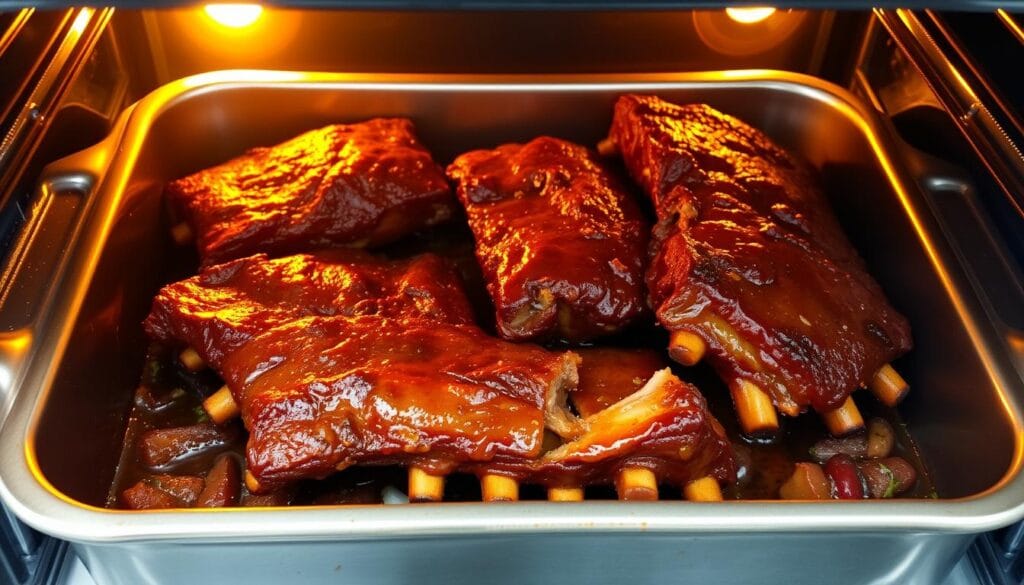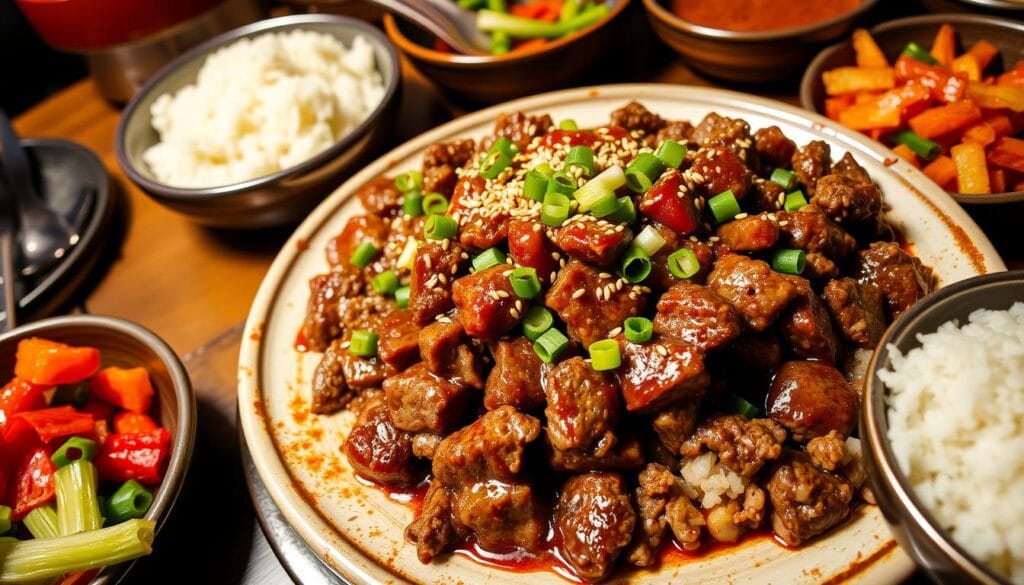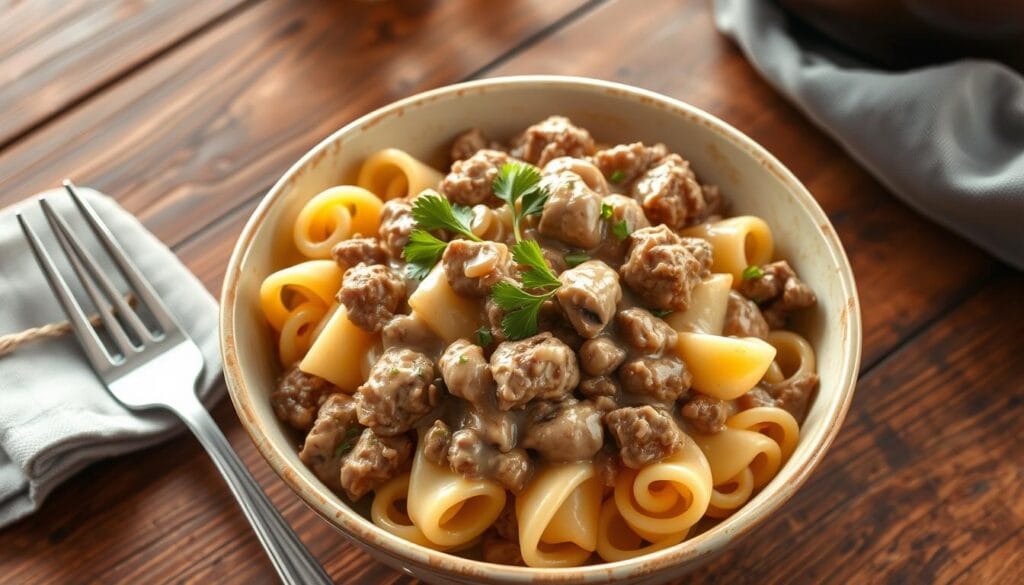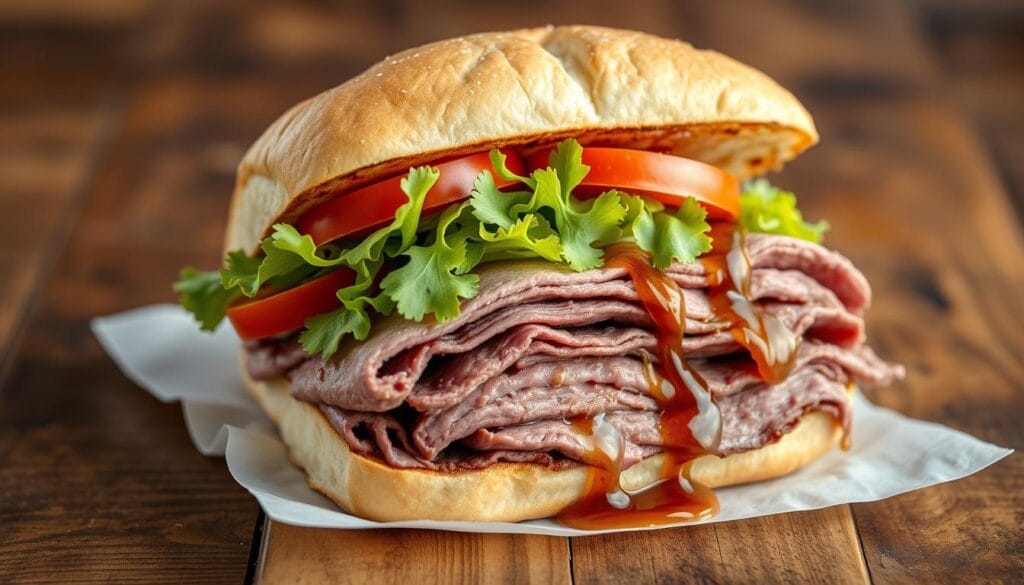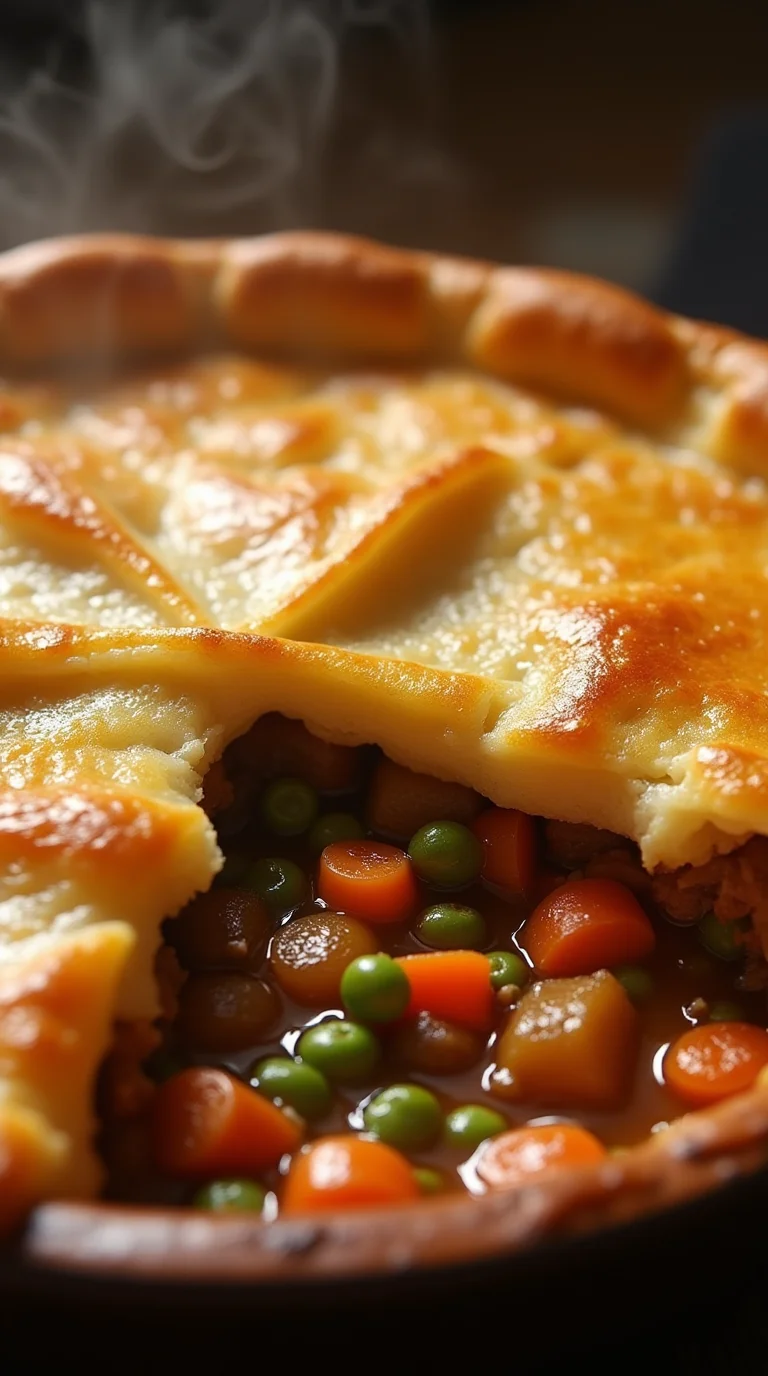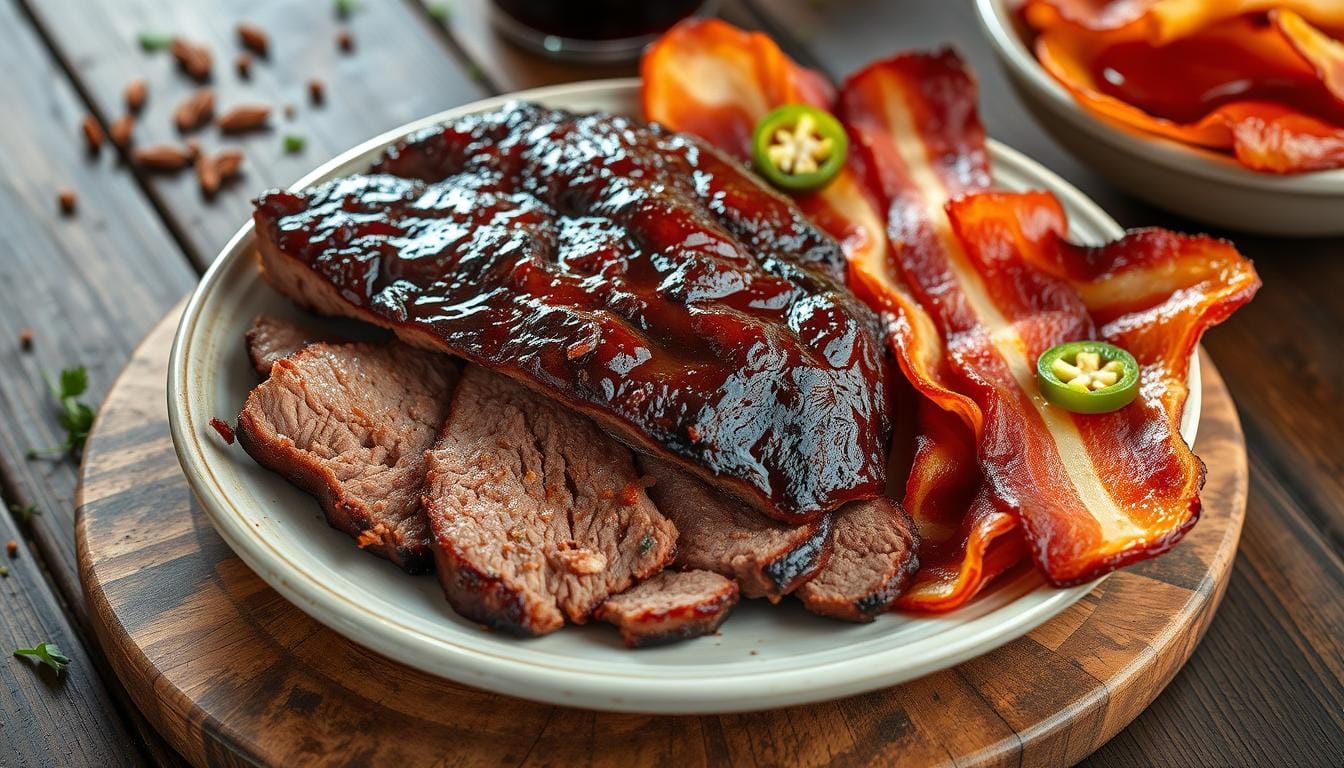Do you remember that feeling? The one where a scent drifts into the air, perhaps from a bustling street market or a simmering pot in your own kitchen, and instantly transports you? For me, it’s often the intoxicating aroma of garlic sizzling with ginger, the sweet-and-savory notes of soy sauce caramelizing, or the subtle perfume of toasted sesame.
These are the scents that whisper promises of incredible flavor, especially when beef is involved.
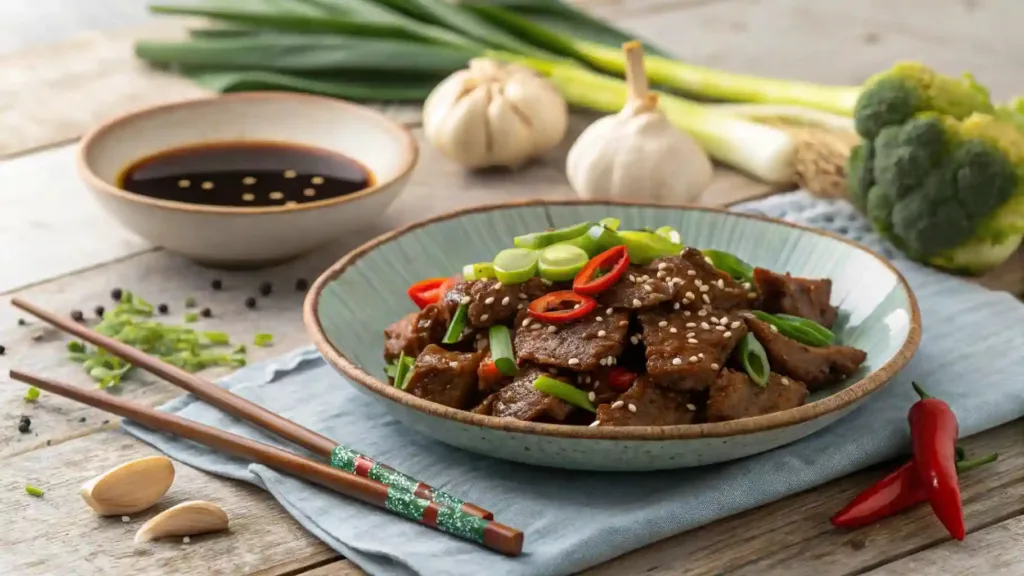
There’s something uniquely comforting and exciting about Asian beef dishes – whether it’s the fiery kick of a Sichuan stir-fry, the comforting warmth of a Japanese sukiyaki, or the vibrant freshness of a Vietnamese noodle salad.
This article isn’t just about recipes; it’s about bringing those evocative experiences, those moments of culinary delight, right into your home. Join me as you embark on a flavorful adventure, discovering the diverse and delicious world of beef recipes Asian style.
The Pillars of Asian Beef Cookery: Essential Ingredients & Techniques
To master the art of preparing beef recipes Asian style, you must first understand the fundamental building blocks – the core ingredients and the clever techniques that define this vast culinary landscape. These elements, though seemingly simple, are the secret to unlocking authentic and deeply satisfying flavors.
Building Your Asian Pantry: Key Ingredients for Authentic Flavors
Imagine your pantry as a treasure chest, filled with the essential components that will transform ordinary beef into extraordinary Asian dishes. You’ll find that many of these are versatile and appear across various regional cuisines.
- Soy Sauce Varieties: This cornerstone condiment comes in many forms, each with a distinct role.
- Light Soy Sauce: Your everyday workhorse for seasoning, providing saltiness and umami.
- Dark Soy Sauce: Thicker, darker, and less salty than light soy, it’s primarily used for color and a subtle sweetness.
- Sweet Soy Sauce (Kecap Manis): A thick, syrupy Indonesian soy sauce with palm sugar, perfect for glazes and enriching gravies.
- Tamari: A gluten-free alternative to traditional soy sauce, offering a similar depth of flavor.
- Aromatics: These fresh, pungent ingredients are the aromatic soul of Asian cooking.
- Fresh Ginger: Pungent and slightly spicy, often minced or sliced.
- Garlic: Ubiquitous across almost all cuisines, providing a foundational flavor.
- Spring Onions (Scallions): Used for both flavor and garnish, offering a mild oniony bite.
- Chilies (Fresh and Dried): For heat and a vibrant kick. Consider bird’s eye chilies for intense spice or dried Sichuan chilies for a numbing warmth.
- Oils & Fats: Beyond just cooking mediums, these add layers of flavor.
- Sesame Oil: Best used as a finishing oil for its nutty aroma. A little goes a long way.
- Peanut Oil: A high smoke point oil ideal for stir-frying.
- Vegetable Oil: A neutral oil for general cooking.
- Beef Fat: Rendered beef fat can add incredible depth to certain slow-cooked or braised dishes, elevating the beefy essence.
- Sweeteners & Acids: The balance of sweet and sour is critical in many Asian flavors.
- Brown Sugar/Palm Sugar: For a rich, caramel-like sweetness.
- Honey: Adds a different kind of sweetness and gloss.
- Rice Vinegar: Milder than Western vinegars, providing a gentle tang.
- Lime Juice: Offers bright, fresh acidity, particularly in Southeast Asian dishes.
- Spices & Pastes: These provide the unique character of regional dishes.
- Five-Spice Powder: A classic Chinese blend (star anise, cloves, Chinese cinnamon, Sichuan peppercorns, fennel seeds).
- Curry Pastes (Red, Green, Massaman): Pre-made blends offering complex, aromatic bases for Thai curries.
- Fermented Bean Paste (Doubanjiang): A savory, sometimes spicy, Chinese paste crucial for dishes like Mapo Tofu.
- Gochujang: A savory, sweet, and spicy fermented Korean chili paste.
- Shichimi Togarashi: A Japanese seven-spice blend for sprinkling.
- Noodles & Rice: The essential carbohydrate companions.
- Various Types of Rice Noodles: Thin vermicelli, wide flat noodles, often used in soups and stir-fries.
- Egg Noodles: Chewy and versatile, found in many Chinese dishes.
- Jasmine Rice: The fragrant staple of many Asian meals.
- Sticky Rice: A glutinous rice popular in Laos and parts of Thailand.
- Fresh Herbs: For freshness, aroma, and a burst of flavor.
- Cilantro: A common garnish and flavor enhancer.
- Mint: Adds a refreshing note, especially in Vietnamese cuisine.
- Basil (Thai Basil): A licorice-like aroma, distinct from Western basil.
Sources to Stock Your Pantry: To ensure you’re getting authentic ingredients, consider visiting your local Asian grocery store. These stores typically offer a wider selection and better prices than general supermarkets. Online retailers also provide access to specialized ingredients if local options are limited. Look for reputable brands known for quality and authenticity.
Mastering the Wok and Beyond: Essential Asian Cooking Techniques
Beyond ingredients, the way you prepare your beef is paramount. Asian cuisines boast techniques designed to maximize flavor, tenderness, and texture.
- Stir-Frying: This is the quintessential Asian cooking method, demanding high heat and rapid movement.
- Key Points: The goal is often “wok hei,” a smoky, charred aroma achieved from intense heat. To accomplish this, ensure your wok or pan is searingly hot before adding ingredients. Avoid overcrowding the pan; cook your beef in batches if necessary to prevent steaming. Remember to cut your beef thinly and against the grain for maximum tenderness and quick cooking.
- Braising & Slow Cooking: For tougher cuts of beef, patience yields incredible rewards.
- Key Points: This method, often used for short ribs or brisket, involves simmering meat in a flavorful liquid over a long period. The low, slow heat breaks down connective tissues, resulting in incredibly tender, fall-apart beef infused with complex flavors from the braising liquid. Think rich curries and stews.
- Grilling & Roasting: These techniques infuse beef with smoky notes and delicious caramelization.
- Key Points: Marinating beef extensively before grilling (e.g., for bulgogi or satay) is crucial for flavor penetration and tenderness. Achieving a good char on the exterior while keeping the interior juicy is the mark of a well-grilled piece of beef. Roasting can offer a hands-off approach to cooking larger cuts, often after a searing step.
- Blanching & Steaming: While not always for the beef itself, these methods are vital for preparing the vibrant vegetables and noodles that accompany many beef recipes Asian.
- Key Points: Blanching vegetables briefly in boiling water preserves their color and crispness before adding them to a stir-fry or salad. Steaming is a gentle cooking method that maintains the integrity of ingredients, perfect for delicate items or rewarming.
Sources for Mastering Techniques: Many reputable Asian cookbooks and online culinary institutions offer detailed guides and video tutorials on these techniques. Investing time in learning proper knife skills, especially for uniform slicing, will also significantly improve your results.
A Culinary Map: Exploring Diverse Beef Recipes Across Asia
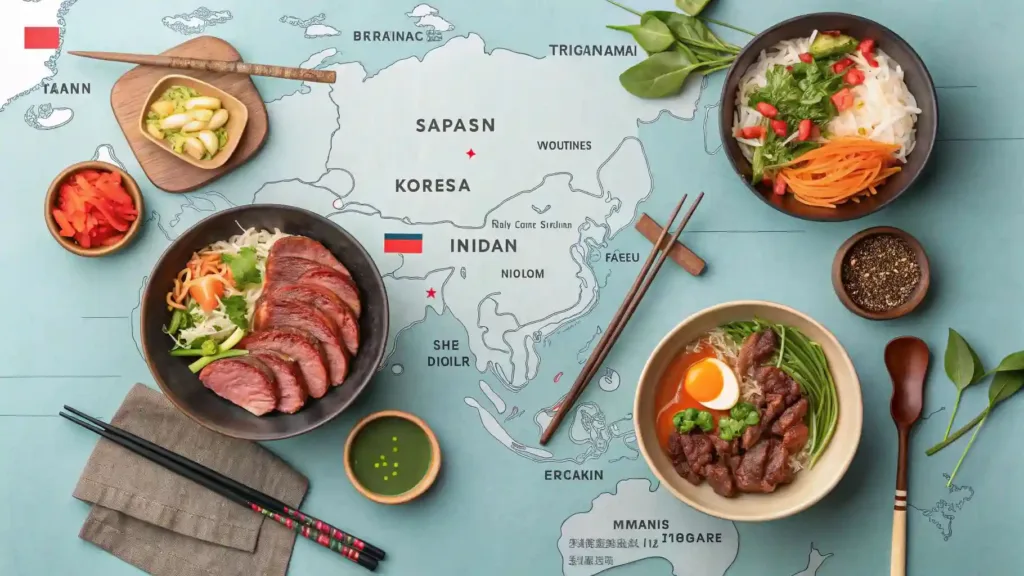
Now that you’re equipped with pantry essentials and fundamental techniques, let’s embark on a delicious journey through specific regions, exploring their iconic beef recipes Asian style. Each area brings its unique blend of flavors and culinary philosophy.
East Asian Elegance: Japanese & Korean Beef Delights
These cuisines emphasize balance, often with a focus on umami and fresh ingredients, alongside bold, savory profiles.
Japanese Classics: Umami-Rich Beef Dishes
Japanese beef dishes are renowned for their delicate balance and ability to highlight the quality of the meat.
- Teriyaki Beef: A universally loved dish, marrying sweet and savory notes.
- Key Points: The signature teriyaki glaze, a blend of soy sauce, mirin (sweet rice wine), sake (rice wine), and sugar, is central. You can grill thin slices of beef or pan-fry them until beautifully caramelized. It’s often served as beef and broccoli or threaded onto skewers for a popular appetizer.
- Gyudon (Beef Bowl): A comforting and popular Japanese staple.
- Key Points: Thinly sliced beef and onions are simmered in a sweet and savory dashi-based broth (often with soy sauce and mirin) and served generously over a bowl of steamed rice. It’s the ultimate quick, satisfying meal. Data indicates it is a hugely popular comfort food across Japan, easily found in dedicated restaurants.
- Sukiyaki/Shabu-Shabu: These hot pot experiences are more than just meals; they are communal culinary events.
- Key Points: Both involve cooking very thin slices of premium beef at the table in a simmering broth. Sukiyaki uses a sweeter, more robust broth, while shabu-shabu utilizes a lighter broth, with ingredients dipped in various sauces after cooking. These dishes celebrate the quality of the beef, with marbling being highly prized.
Korean Sizzle: Bold & Flavorful Beef Creations
Korean beef dishes are celebrated for their vibrant flavors, often featuring a delightful interplay of savory, sweet, and spicy elements.
- Bulgogi (Marinated Grilled Beef): Perhaps Korea’s most famous beef dish, known for its tender texture and irresistible marinade.
- Key Points: The marinade is key, typically including soy sauce, sugar, sesame oil, garlic, and often grated pear or kiwi, which act as natural tenderizers. The thinly sliced beef is traditionally grilled over charcoal, imparting a distinctive smoky flavor, but it can also be pan-fried. You often eat bulgogi with ssam (lettuce wraps), accompanied by rice and various banchan (side dishes).
- Galbi-jjim (Braised Short Ribs): A true celebration dish, perfect for special occasions.
- Key Points: Beef short ribs are slowly braised in a rich, complex sauce made from soy sauce, sesame oil, garlic, ginger, sugar, and sometimes chestnuts or dates. The result is incredibly tender, fall-off-the-bone beef, deeply infused with the savory-sweet sauce. This dish is a testament to the power of low-and-slow cooking.
- Kimchi Jjigae with Beef (Kimchi Stew): A warming, hearty, and intensely flavorful stew.
- Key Points: This beloved Korean stew centers around fermented kimchi, which gives it a characteristic tangy and spicy profile. Tender beef (often pork, but beef is equally delicious) is simmered with tofu, vegetables, and sometimes mushrooms in a spicy broth. For many, it’s the ultimate comfort food on a chilly day, an emotionally resonant dish that warms you from the inside out.
Southeast Asian Adventures: Spicy & Aromatic Beef Dishes
Southeast Asian cuisines are a symphony of bold flavors: sweet, sour, salty, and spicy, often with a heavy reliance on fresh herbs and aromatic spices.
Thai Treasures: Balancing Sweet, Sour, Salty, and Spicy Beef
Thai cuisine is all about harmony, where each dish aims for a perfect balance of the four fundamental tastes.
- Beef Panang Curry: A rich and creamy curry with a distinct, slightly sweet flavor.
- Key Points: This curry features a thick coconut milk base and the aromatic Panang curry paste, which has notes of makrut lime and peanuts. Slices of tender beef simmer until infused with the complex flavors of the paste and coconut milk. You can easily adjust the spice levels to your preference.
- Beef Massaman Curry: A unique Thai curry with strong Indian and Malay influences.
- Key Points: Massaman curry paste boasts a unique blend of spices like cardamom, cinnamon, and cloves, less common in other Thai curries. It often includes potatoes and peanuts, creating a hearty and aromatic dish. Its historical origins trace back to Persian traders, illustrating the cross-cultural exchange that shaped regional cuisines.
- Pad See Ew with Beef: A popular street food dish known for its wide, chewy noodles and savory flavor.
- Key Points: This stir-fry combines wide rice noodles, Chinese broccoli, and tender beef, all coated in a dark, sweet soy sauce-based sauce. The “wok hei” technique is crucial here, imparting a smoky, charred flavor to the noodles and beef, a hallmark of authentic street food.
Vietnamese & Malaysian Delights: Freshness and Depth
Vietnamese cuisine often celebrates fresh herbs and light broths, while Malaysian dishes can be richly spiced and slow-cooked.
- Pho Bo (Vietnamese Beef Noodle Soup): Vietnam’s national dish, renowned for its incredibly aromatic and complex broth.
- Key Points: The clear, deeply flavorful broth is simmered for hours with charred aromatics (ginger, onion), and spices like star anise, cinnamon, and cloves. Thinly sliced raw beef is cooked by the heat of the broth when served, alongside fresh rice noodles and a generous array of fresh herbs like cilantro, basil, and mint. Learning to make an authentic broth is a rewarding culinary endeavor.
- Bo Luc Lac (Shaking Beef): A vibrant and popular Vietnamese dish, named for the “shaking” motion of the wok.
- Key Points: Cubed beef is quickly seared at high heat, often with garlic and onions, until caramelized on the outside and tender within. It’s typically served over a bed of watercress or lettuce with a simple lime-pepper dipping sauce, offering a delightful contrast of textures and flavors. Its elegant presentation makes it a favorite.
- Beef Rendang (Malaysian/Indonesian Dry Curry): A rich and intensely flavorful dry curry, often served at festive occasions.
- Key Points: Beef is slow-cooked in a mixture of coconut milk and a complex spice paste (rempah) until the liquid completely evaporates and the oil separates, creating a rich, almost caramelized coating. The result is incredibly tender beef, deeply infused with the aromatic spices. Data confirms it’s a staple at celebrations like Eid.
South Asian Influences: Indian & Middle Eastern-Inspired Beef (where applicable)
While the article focuses primarily on East and Southeast Asian beef recipes Asian, it’s worth noting the culinary connections and influences from the broader Asian continent. Certain regions of Asia have strong culinary ties to the Indian subcontinent and the Middle East, leading to fascinating cross-cultural dishes.
- Beef Curry (Indian Subcontinent style): In various parts of Asia, particularly those with historical ties to the Indian subcontinent, you will find beef curries that mirror the complexity and depth of Indian cuisine.
- Key Points: These often feature highly complex spice blends, sometimes toasted and ground fresh. The beef is typically slow-cooked until exceptionally tender, allowing it to fully absorb the rich flavors of the spices and aromatics. Examples include variations akin to Rogan Josh or Madras beef curry, adapted to local preferences.
- Beef Kofta/Kebabs (Middle Eastern influence): In Central and West Asian countries, and even parts of Southeast Asia with historical trade routes, you might encounter beef preparations with Middle Eastern influences.
- Key Points: These often involve ground beef or thinly sliced cuts mixed with various spices and herbs, formed into meatballs (kofta) or skewered for grilling (kebabs). They often feature ingredients like cumin, coriander, and parsley, showcasing a different aromatic profile.
Tips for Perfecting Your Asian Beef Creations
Achieving restaurant-quality results with your beef recipes Asian at home is entirely within your grasp. Here are some actionable tips to elevate your cooking.
Selecting the Right Beef Cut for Asian Recipes
The cut of beef you choose profoundly impacts the final texture and taste of your dish. Understanding which cuts suit which cooking methods is crucial.
- For Stir-fries:
- Flank Steak: Lean and flavorful, great when sliced thinly against the grain.
- Sirloin: A versatile choice, offering a good balance of tenderness and flavor.
- Tenderloin: The most tender option, ideal for dishes where melt-in-your-mouth texture is paramount. Always slice these thinly and against the grain for optimal results.
- For Braising/Stewing: These methods benefit from cuts with more connective tissue that break down beautifully over long cooking times.
- Short Ribs: Rich, flavorful, and incredibly tender when slow-cooked.
- Chuck Roast: A cost-effective and flavorful option that becomes fork-tender.
- Brisket: Another excellent choice for slow cooking, yielding succulent results.
- For Grilling:
- Skirt Steak: Absorbs marinades well and cooks quickly, developing a fantastic char.
- Ribeye: Offers excellent marbling, resulting in juicy, flavorful grilled beef.
- Sirloin: A solid choice for dishes like bulgogi, where thin slices are quickly grilled.
- For Ground Beef Dishes:
- Lean Ground Beef: Suitable for dishes where you want the beef to meld into a sauce, like Mapo Tofu with beef (Sichuan style) or various curries.
- Ground Chuck: A slightly higher fat content adds more flavor and moisture.
Sources for Beef Selection: Don’t hesitate to ask your butcher for advice on the best cuts for specific Asian dishes. Many online culinary guides also provide detailed explanations and visual aids for beef cuts.
Marinades, Tenderizers, and Flavor Boosters
These elements are your secret weapons for transforming beef from good to exceptional.
- Velveting Beef: This essential Chinese technique is a game-changer for stir-fries, ensuring incredibly tender, “velvet-like” beef.
- How-to: Simply coat thinly sliced beef with a mixture of baking soda (about 1/2 teaspoon per pound of beef) and a small amount of cornstarch, along with soy sauce and oil. Let it sit for 20-30 minutes, then rinse it thoroughly before cooking. The baking soda slightly raises the pH of the meat, preventing the proteins from seizing up, while the cornstarch creates a protective barrier.
- Fruit Enzymes: Certain fruits contain natural enzymes that break down protein, acting as potent tenderizers.
- Usage: Grated pear (common in bulgogi), kiwi, or a tiny amount of pineapple juice can tenderize beef quickly. Use them sparingly, as too much can turn the beef mushy.
- Achieving Deep Flavor: Beyond marinades, consider these techniques for maximum taste.
- Toasting Spices: Lightly toasting whole spices before grinding them releases their aromatic oils, intensifying their flavor.
- Blooming Aromatics: Sautéing garlic, ginger, and chilies in oil until fragrant at the beginning of your cooking process builds a foundational flavor layer.
- Layering Sauces: Don’t just dump all the sauce in at once. Add components incrementally, allowing each to cook down and develop before adding the next.
Accompaniments and Serving Suggestions
The complete Asian meal is a symphony of components, with the beef dish often taking center stage but harmonizing with complementary sides.
- Rice: The quintessential accompaniment.
- Jasmine Rice: Fragrant and fluffy, perfect for most East and Southeast Asian dishes.
- Sushi Rice: Stickier, ideal for Japanese meals.
- Brown Rice: A healthier, nutty alternative.
- Noodles: Offering a different textural experience.
- Various Types of Rice Noodles: From delicate vermicelli for soups to wide flat noodles for stir-fries.
- Egg Noodles: Chewy and versatile, great in many Chinese dishes.
- Vegetables: Providing freshness, color, and essential nutrients.
- Steamed Vegetables: Simple and healthy, like broccoli or bok choy.
- Stir-fried Vegetables: Incorporate them directly into your beef dish or serve them separately for variety.
- Pickled Vegetables: Offer a tangy contrast, cutting through richness.
- Garnishes: The final flourish that adds both visual appeal and a burst of fresh flavor.
- Fresh Herbs: Cilantro, mint, Thai basil.
- Toasted Sesame Seeds: For a nutty crunch.
- Chili Flakes/Oil: For an extra kick.
- Fried Shallots: Crispy and aromatic.
FAQs About Beef Recipes Asian Style
You likely have some common questions as you venture into the world of beef recipes Asian. Here are some answers to frequently asked queries.
What are some popular beef recipes Asian that are quick to make?
Many Asian beef dishes are designed for speed, especially stir-fries. If you’re looking for efficiency without sacrificing flavor, consider:
- Bulgogi, if you have the beef pre-marinated, it cooks in minutes on a hot pan or grill.
- Pad See Ew with Beef, a classic noodle stir-fry that comes together quickly with prepped ingredients.
- Beef Stir-fry with Broccoli (or your preferred vegetables), the epitome of a fast weeknight meal, especially if your beef is thinly sliced and possibly velveted.
- Bo Luc Lac (Shaking Beef), a rapid sear of cubed beef makes this a surprisingly quick and elegant dish.
The key to quick Asian cooking is often the preparation (mise en place) – having all your ingredients chopped, sauces mixed, and beef pre-marinated before you even turn on the heat.
How can I make my beef recipes Asian more tender?
Tenderizing beef is a common concern, and Asian culinary traditions offer several effective methods:
- Choose the Right Cut: As discussed, certain cuts like flank steak or sirloin are naturally more tender when sliced correctly. For slow-cooked dishes, tougher cuts become incredibly tender over time.
- Slice Against the Grain: This is paramount. Cutting perpendicular to the muscle fibers shortens them, making each bite significantly easier to chew.
- Velvet the Beef: This Chinese technique, using baking soda and cornstarch, is incredibly effective for stir-fries. It creates a protective coating and gently breaks down muscle fibers.
- Marinate with Tenderizers: Ingredients like grated pear (in Korean bulgogi), kiwi, or even pineapple juice (used sparingly!) contain enzymes that naturally tenderize meat. Acidic marinades (vinegar, citrus) can also contribute, though their primary role is often flavor.
- Slow-Cooking Methods: For cuts like short ribs or chuck, braising or stewing for extended periods on low heat will yield fall-apart tenderness.
Are beef recipes Asian generally spicy?
It’s a common misconception that all Asian food is inherently spicy. The reality is far more diverse!
- While some cuisines, like certain Thai curries (e.g., Red Curry) or Sichuan dishes (e.g., Mapo Tofu, Kung Pao Beef), are known for their fiery kick, many others are mild and emphasize different flavor profiles.
- Japanese dishes like Teriyaki Beef or Gyudon are savory and sweet.
- Korean Bulgogi is primarily savory and sweet with garlic notes, while Kimchi Jjigae offers adjustable spice levels based on your kimchi and chili paste additions.
- Vietnamese Pho Bo is aromatic and deeply savory, not spicy unless you add fresh chilies or chili sauce at the table.
You can almost always adjust the spice level in beef recipes Asian to your personal preference by controlling the amount of fresh chilies, chili paste, or chili oil you incorporate.
Where can I find authentic ingredients for beef recipes Asian?
Sourcing authentic ingredients is crucial for achieving genuine flavors:
- Asian Grocery Stores: These are your best resource. They typically offer a vast selection of specialty sauces, spices, noodles, fresh produce, and unique cuts of meat that you won’t find in regular supermarkets.
- Online Specialty Food Retailers: If you don’t have a local Asian market, numerous online stores specialize in Asian ingredients and can ship them directly to your door.
- Major Supermarkets: Increasingly, larger supermarkets are expanding their international aisles to include common Asian ingredients like various soy sauces, sesame oil, rice noodles, and some basic curry pastes.
- Farmers’ Markets: For fresh aromatics and certain vegetables, your local farmers’ market can be a great source, ensuring peak freshness.
Don’t be afraid to ask staff at Asian grocery stores for recommendations or assistance; they are often incredibly knowledgeable and happy to help you find what you need.
Conclusion: Your Journey into Asian Beef Delights
You’ve now taken a comprehensive dive into the captivating world of beef recipes Asian. From the sizzling woks of China to the comforting hot pots of Japan, and the aromatic curries of Thailand, you’ve seen that this culinary sphere offers an incredible tapestry of flavors, aromas, and deeply rooted culinary traditions. We’ve explored the essential ingredients that form the backbone of these dishes, delved into the clever techniques that transform simple cuts of beef into tender, aromatic masterpieces, and journeyed through various regions to uncover their iconic beef creations.
But this article is just the beginning of your adventure. The true magic happens when you step into your own kitchen, armed with new knowledge and inspiration. Don’t be afraid to experiment, to adjust spice levels to your liking, or to incorporate your favorite vegetables. Each dish is an opportunity to create something truly delicious and to share a taste of Asia with your loved ones.
So go ahead, grab your wok, gather your ingredients, and let the enticing aromas of garlic, ginger, and soy lead you on your next culinary masterpiece. We encourage you to try one of these remarkable beef recipes Asian tonight! Share your creations with us on social media using #AsianBeefAdventures, or leave a comment below with your favorite discovery. Happy cooking, and may your kitchen be filled with the wonderful scents of Asia!
